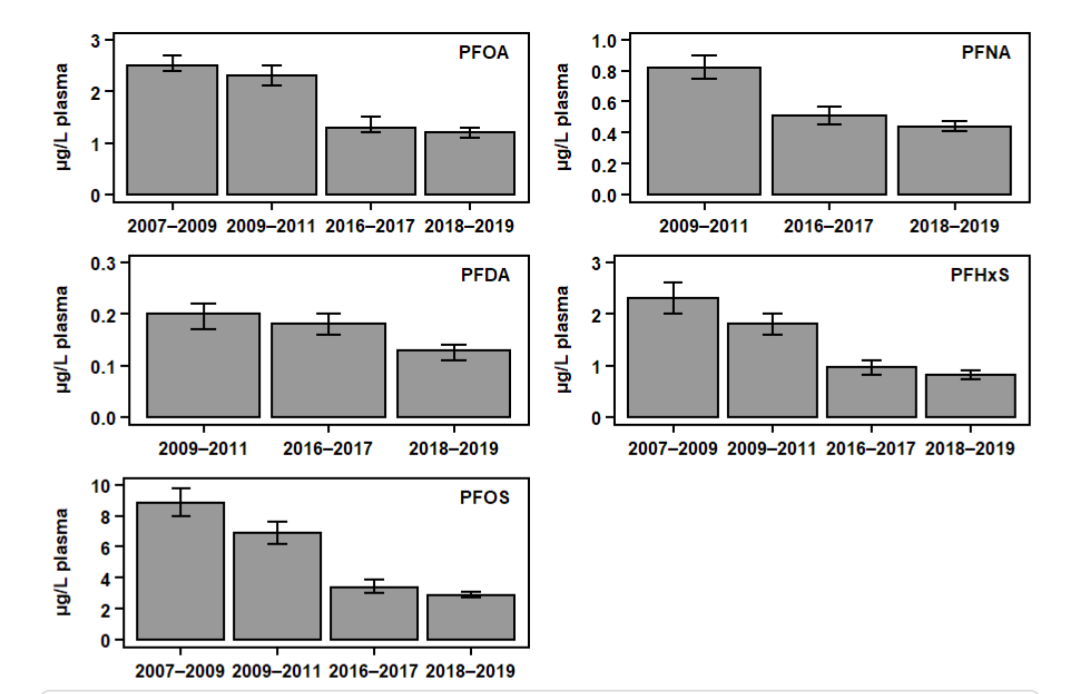

Blood serum PFAS concentrations thankfully have been decreasing over time. It’s probably not worth getting yours tested unless you had some specific exposure other than consumer goods. You should ask your doctor, if you have one.
This data is from Canada, but the results are similar for the US.






It’s the foams specifically for fighting fuel fires that are made from PFAS. Unfortunately, their safety gear also is loaded with PFAS.